Throughout the Trump administration’s first year in office, the Environmental Protection Agency has been quietly scrubbing mentions of climate change and tweaking related language on its website – an effort critics have decried as scientific censorship.
The EPA is far from the only federal agency to get a Trump-era work over. But monitoring organizations say it has suffered the most extensive revisions over the past year.
These alterations, which began within days of President Donald Trump’s inauguration, reflect a marked departure from the EPA’s roots in an era of burgeoning environmental activism. In 1962, marine biologist Rachel Carson ignited an advocacy movement with her book Silent Spring, which warned that humans were poisoning their environment with pesticides, and, in turn, the environment would eventually poison humans too. The message, compounded by environmental disasters of that decade, attracted the sympathies of President Richard Nixon, who created the Environmental Protection Agency in 1970 in part to regulate the impact of human activities on the environment.
Nearly five decades later, the current administration is waging a blitzkrieg against the widely held consensus that human activity is a driving force behind climate change. This reorientation has triggered a purge of environmental websites, and especially, the EPA’s, which once boasted readers had “come to the right place” for the latest information on climate change.
According to former government officials and EPA staffers, the level of scrutiny is without precedent. In the hands of an administration that has eschewed facts for their alternative cousins, the agency’s site is increasingly unmoored from its scientific core.
“In my experience, new administrations might come in and change the appearance of an agency website or the way they present information, but this is an unprecedented attempt to delete or bury credible scientific information they find politically inconvenient,” Heather Zichal, a senior fellow at the Atlantic Council’s Global Energy Center, and previously President Barack Obama’s top White House adviser on energy and climate change, tells TIME.
The EPA’s site is now riddled with missing links, redirecting pages and buried information. Over the past year, terms like “fossil fuels”, “greenhouse gases” and “global warming” have been excised. Even the term “science” is no longer safe.
Christine Todd Whitman, the EPA Administrator under George W. Bush, says the overhaul is “to such an extreme degree that [it] undermines the credibility of the site”.
“The message they’re sending, particularly to young people, is that science doesn’t matter,” she tells TIME. “Don’t get me wrong – questioning is fine and good, but when you have overwhelming consensus on something, you concede to that. Undermining science means there is no basis on which to act based on fact, which is dangerous.”
Scientists say the year-long overhaul has unraveled decades’ worth of research, while undermining the agency’s mission, which promises to source the “best available scientific information”.
“The idea that the science of climate change is in doubt – and that this justifies changing EPA websites – is simply false,” Philip Duffy, president of the Woods Hole Research Center, tells TIME.
“I see no way to avoid concluding that [the current EPA administration] places the interests of the fossil industry above those of the people it is charged to protect,” he added.
During his campaign, Trump vowed to “get rid” of the EPA. Once in office, he proposed gutting the budget by 31%, appointed a notorious climate change skeptic to head it and issued a series of executive orders aimed at decimating any work deemed an impediment to energy production. He also immediately ordered the removal of climate change information from the site, according to Reuters.
Of the more than 25,000 web pages tracked by the Environmental Data and Governance Initiative (EDGI) since Trump’s election, they say the EPA’s have been hit hardest. One section, which provided local communities with resources for combating climate change, disappeared for months only to resurface heavily redacted, including just 175 of its 380 pages.
Although the EPA did not return requests for comment, it said in a statement in April that it was “removing outdated language” on the website and acknowledged that “content related to climate and regulation is also being reviewed.”
“We are currently updating our website to reflect EPA’s priorities under the leadership of President Trump and Administrator Pruitt,” says the error message now ubiquitous across the site.
Burying climate change information
When Scott Pruitt’s name emerged for the EPA administrator position, scientists raised concerns about the effect he could have on Americans’ access to climate science. Pruitt billed himself as the “leading advocate” against the “activist agenda” of the agency, which he sued 14 times. Now spearheading the EPA, Pruitt is seen as pivoting the agency away from environmental activism toward a more private business-friendly stance. He calls his approach a “back-to-basics agenda” that prioritizes engaging with partners, and implementing “sensible regulations for economic growth”.
Read more: Inside Scott Pruitt’s Mission to Remake the EPA
This shift in outlook is immediately apparent on the EPA’s new homepage. The previous homepage welcomed viewers with a pledge that “cleaning up our communities and taking action on climate change are among our priorities”. That’s been replaced with an appeal to “learn how EPA is increasing transparency and public participation in litigation against the agency”.
But the changes go beyond rhetoric. After the EPA announced its website “update” last April, months after the alterations began, the “Climate Change” section was taken down.
This vast section had existed in various forms for over two decades. Initially launched as a section on “Global Warming”, it served as a hub for basic scientific background on what climate changes is and how human are contributing. “What can we do about this change?” it asked, and provided tools like a carbon footprint calculator and resources for teachers.
“Humans are largely responsible for recent climate change,” one page read, adding, “The choices we make today will affect the amount of greenhouse gases we put in the atmosphere in the near future and for years to come.”
Previously, the climate change section was accessible via the EPA homepage. Now, its URL – www.epa.gov/climatechange – prompts the message, “This page is being updated.”
(The screenshots and red underlines in the sections below are by TIME.)
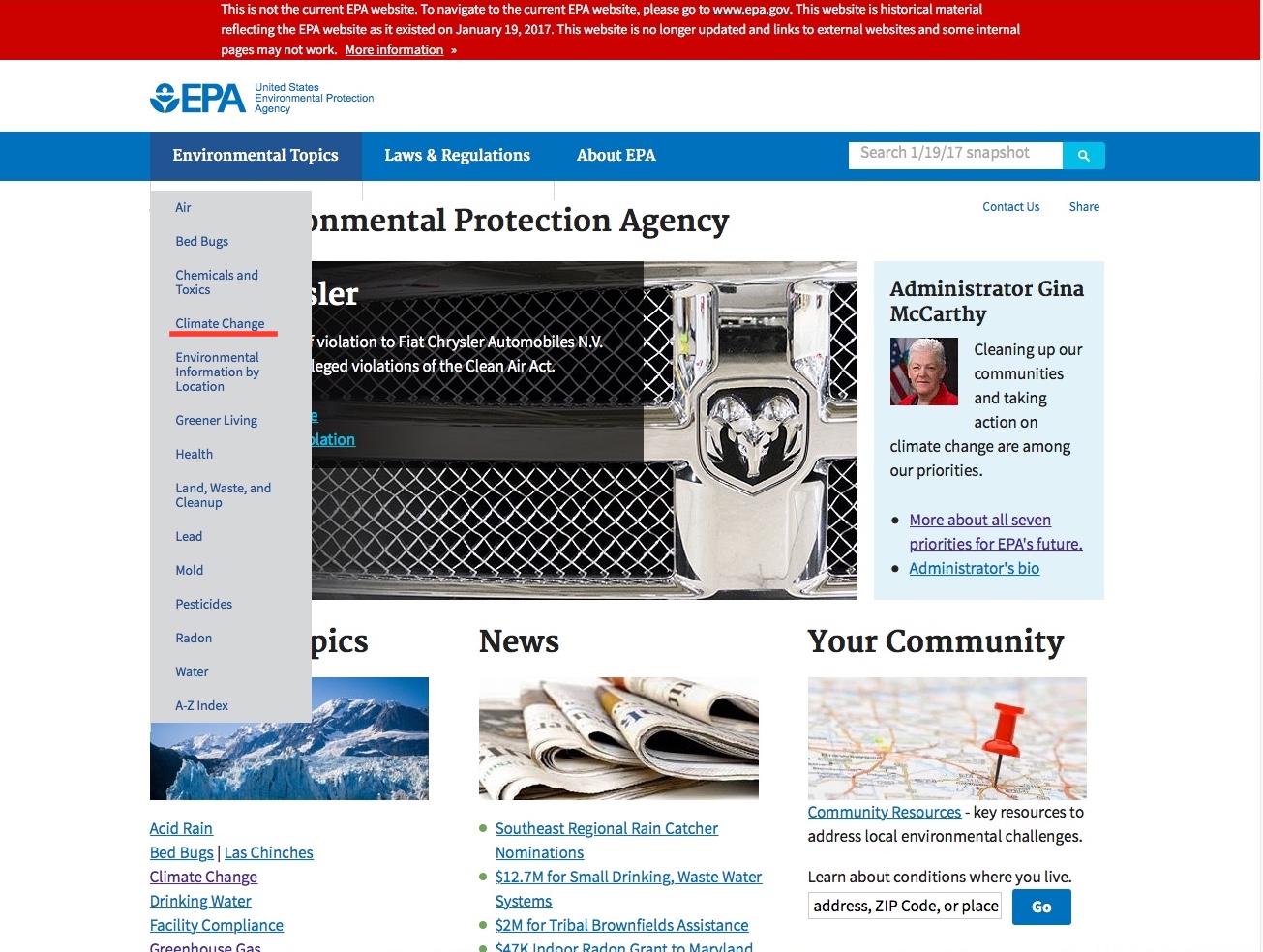
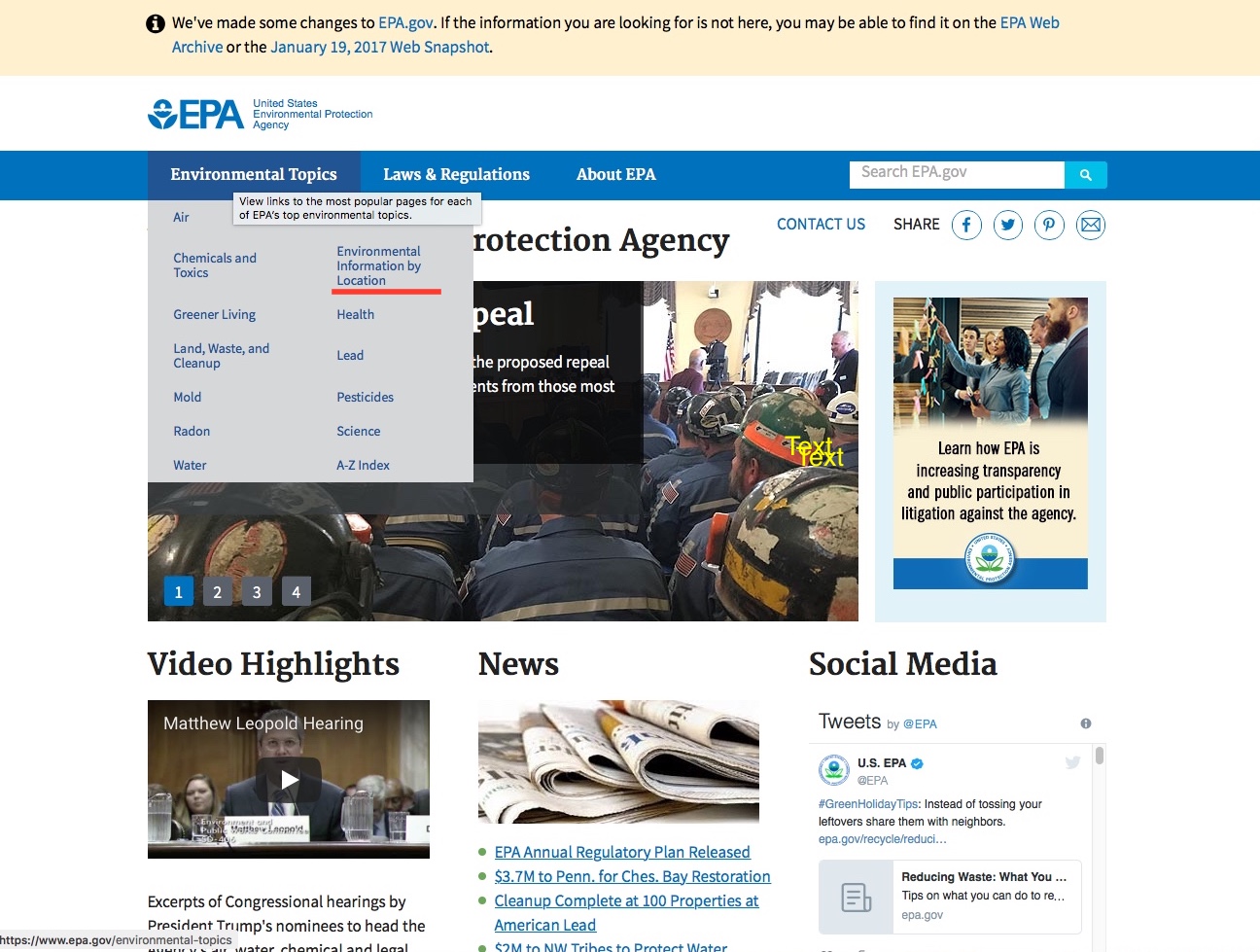
The subdomain remains accessible through the January 19 archive of the website made by the EPA, which comes with a caveat at the top, “this website is historical material” that is “no longer updated”.
Many of the links contained within the climate change subdomain can still be found by individually searching for them. But if you don’t know exactly what you’re looking for it can be difficult, if not impossible, to unearth them from the labyrinthine federal site.
And some of the pages simply no longer exist. A search for the term “climate change” on EPA.gov produces just over 5,000 results. It used to produce more than 12,000.
Altering resources
This map provided regional breakdowns of the effects climate change is having on human health, water resources and local ecosystems:
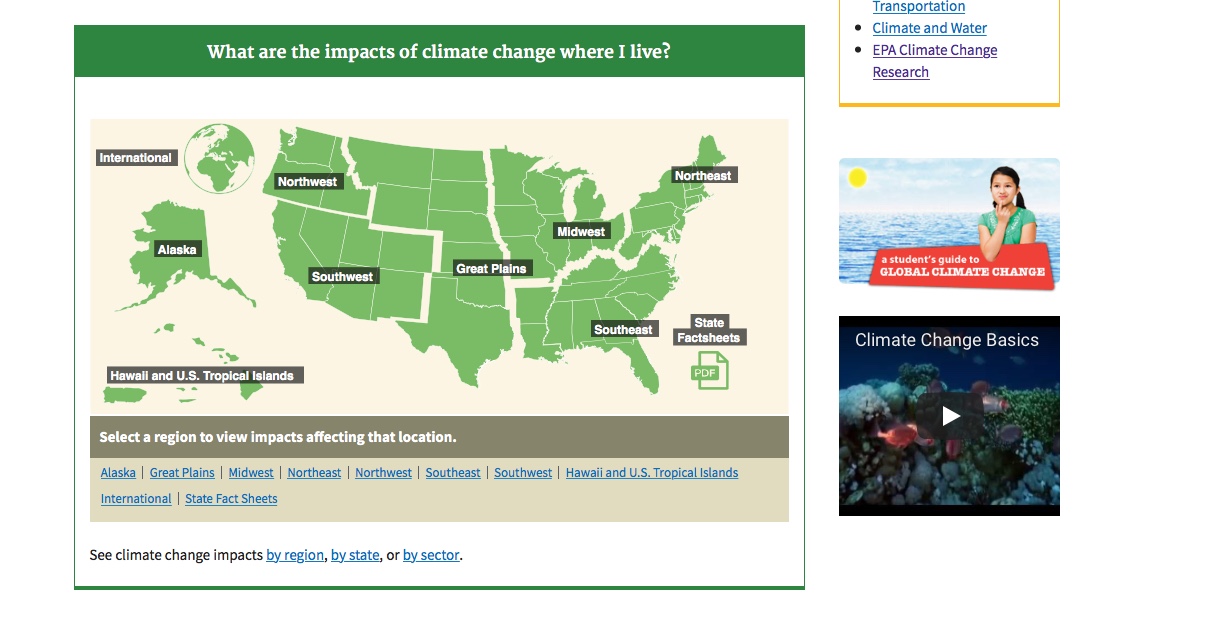
It has now been replaced with this map:
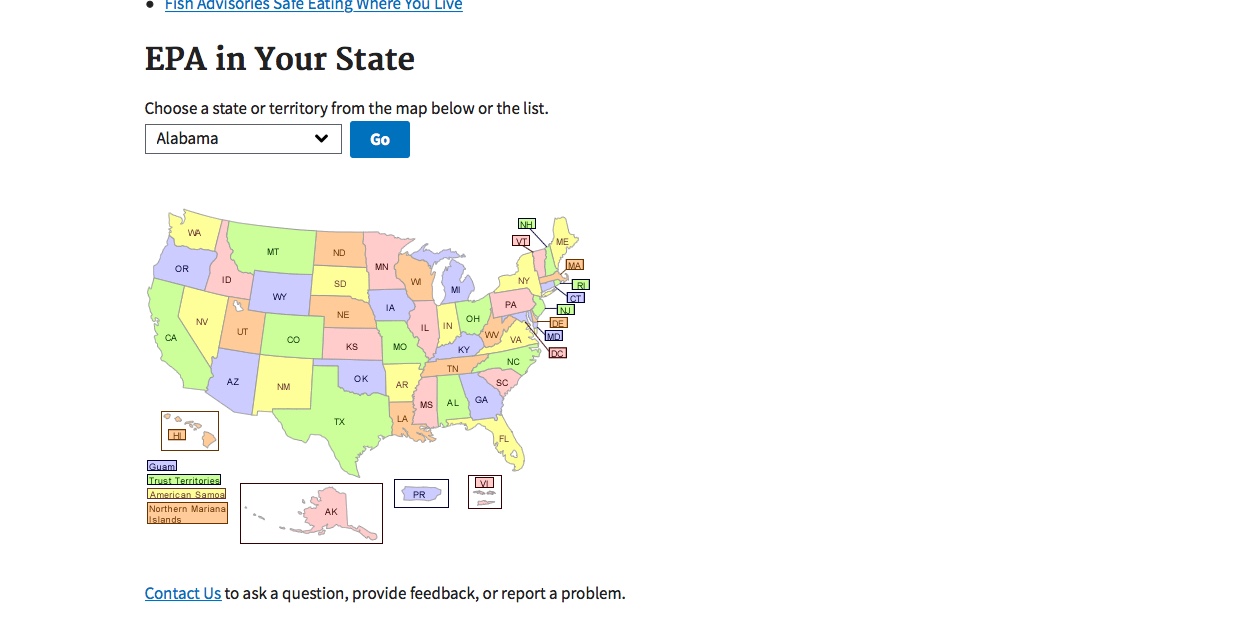
Among the 56 states and territories on the new “EPA in your state” map, just 19 feature any mention of climate change. Out of those, only eight links are functional. Most lead to a 404 “not found” message.
Erasing resources for kids
Before making changes to the agency website, the EPA said it carefully archived all pages from the past administration. But according to EDGI’s monitoring, at least one popular climate-related resource was not included in the EPA’s January 19 archive: a Student’s Guide to Global Climate Change.
“The Earth is getting warmer because people are adding heat-trapping gases to the atmosphere, mainly by burning fossil fuels,” the 50-page site said.

Concerns about the incompleteness of the EPA’s archive prompted some, including the Internet Archive and the City of Chicago, to create and host their own snapshots of the EPA as it existed before the Trump administration.
“While this information may not be readily available on the EPA’s website, in Chicago we know climate change is real,” says the message pinned to the top of Chicago’s archive.
Censoring word choice
Not all of the holes left by the EPA’s scrubbing of climate change are so obvious. Subtle redactions and word choice adjustments are pervasive throughout site. At least one section has been subject to line editing that may escape notice except through a studied comparison.
On the page “Learn about SmartWay” – a Bush-era program to make shipping and logistics more environmentally friendly – the EPA used to mention freight transportation’s adverse effects on “the environment, public health and climate.” But the word “climate” has been scrubbed.
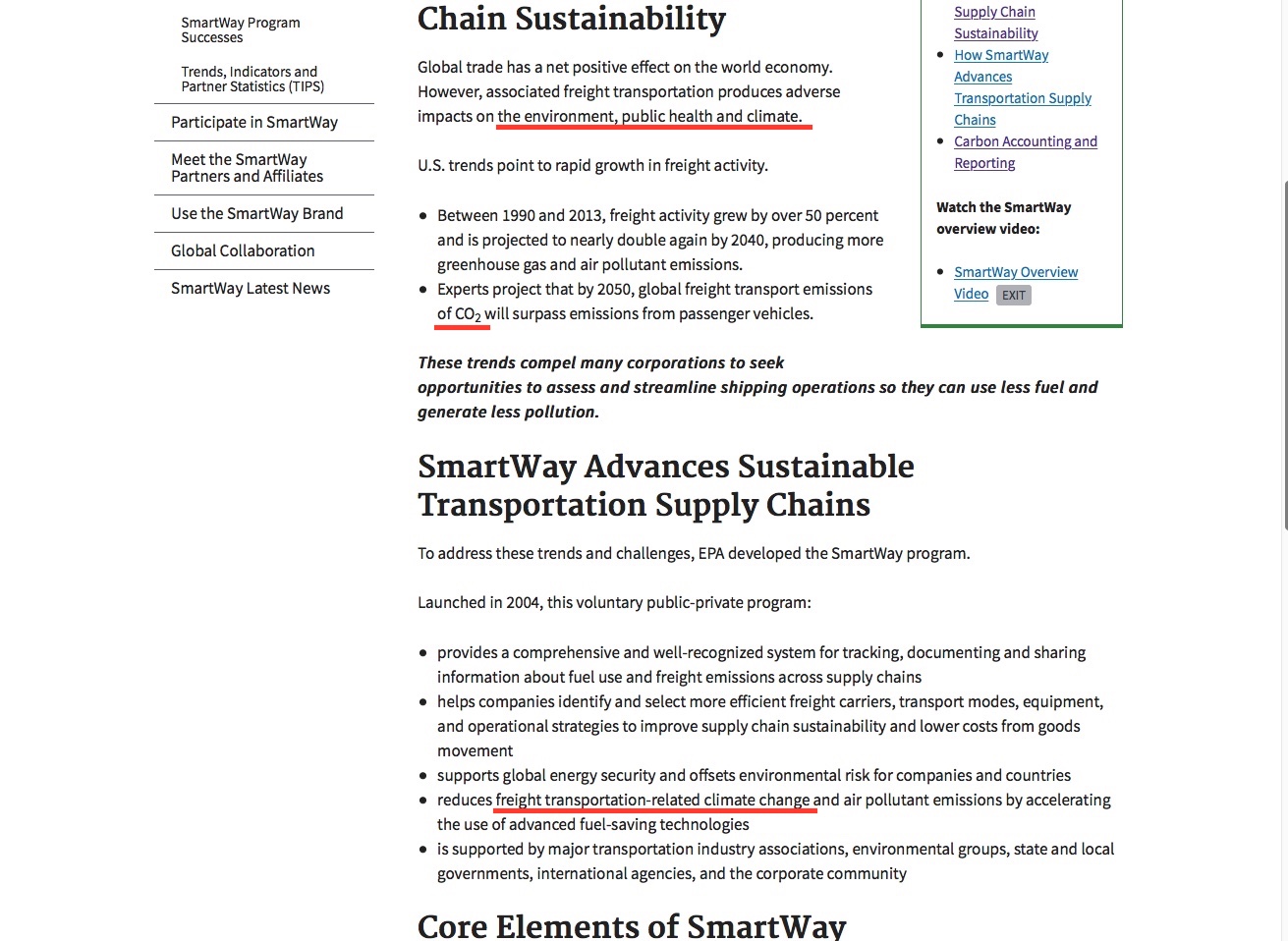
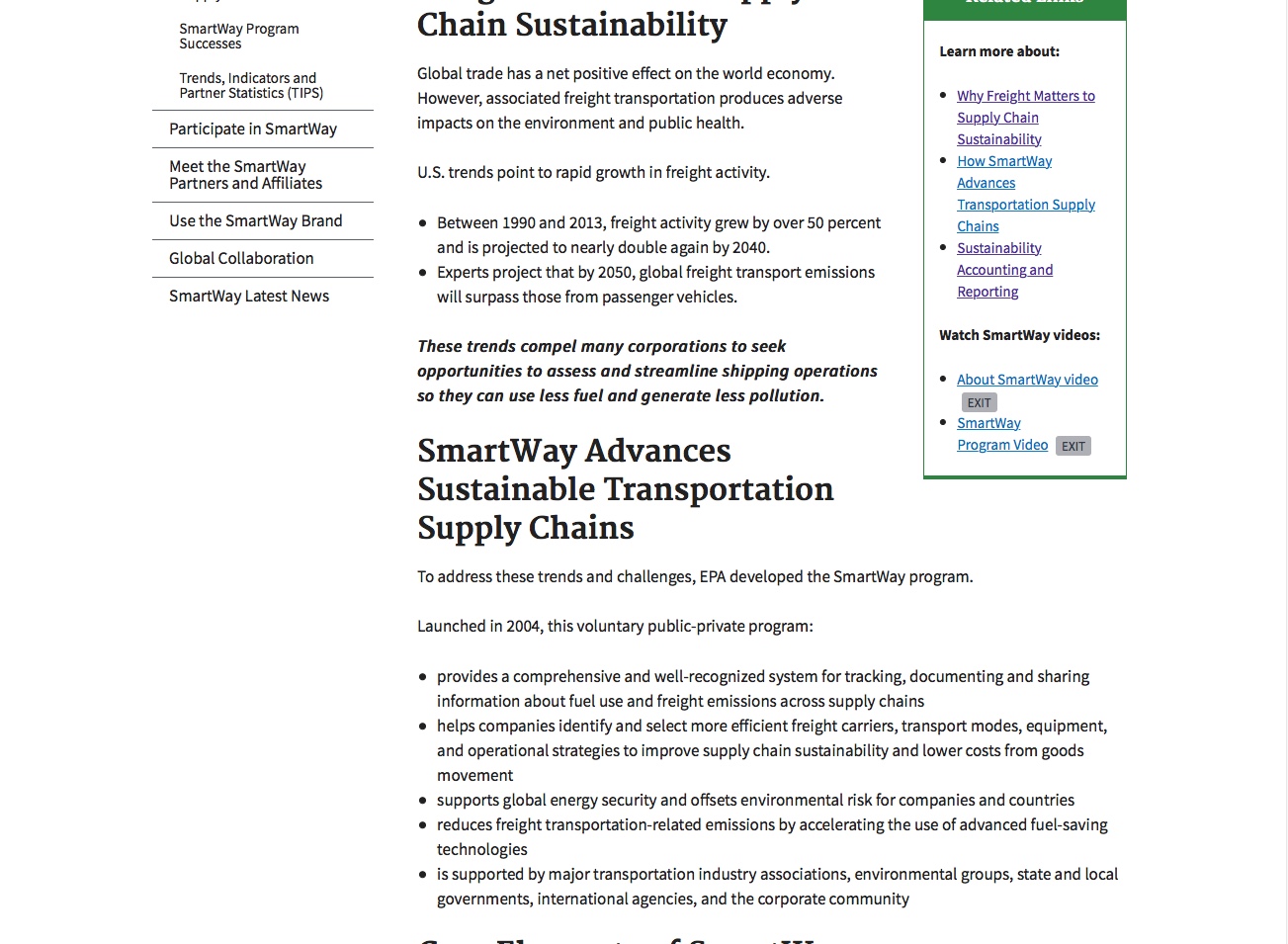
Similarly, the same page previously described how the growth of freight activity has negatively impacted the environment, resulting in more “more greenhouse gas and air pollutant emissions” as well as CO2. All those terms have been erased, leaving only a truism about freight increasing.
Likewise, the phrase “climate change and air pollutant” has been wiped and “carbon footprint” was exchanged for, “environmental footprint.” Working to “harmonize global carbon accounting methods” became “sustainability accounting methods.”
According to the EDGI’s careful scrutiny, most pages related to the SmartWay program have been subjected to such redactions with “climate change” phrases dropped in favor of “more general terms” that appear to minimize the sense of impending threat.
Consequences
As climate change continues bearing down, observers say the EPA’s censorship is not only making it harder to create informed policy, it’s also possibly threatening lives.
“This goes beyond marketing and beyond politics,” Matthew Shudtz, executive director of the Center for Progressive Reform, tells TIME. “People all over the world are losing their lives and their homes as a result of climate change”.
Most climate change models predict extreme weather events like wildfires, droughts, and intense hurricane will become more severe and more common, and advise quick adoption of contingency plans. Trump’s own Secretary of Defense, James Mattis, has acknowledged climate change will “impact our security situation.”
Yet, “climate change resilience” is no longer even listed as a goal of the EPA’s sustainability plan. The removing, burying or redacting of climate change information also comes amid the agency’s wider freeze on litigation and enforcement actions with reported delays or rollbacks on dozens of environmental regulations.
“There is no more significant threat than climate change and it isn’t just happening to people in far off countries – it’s happening to us,” Gina McCarthy, the EPA administrator under President Obama tells TIME.
“Censoring scientific data doesn’t make its threats any less real, it hides the problem from the American people so the Trump administration can wage a dangerous assault on public health safeguards that protect all Americans. It is beyond comprehension that they would ever purposely limit and remove access to information that communities need to save lives and property.”
More Must-Reads from TIME
- Where Trump 2.0 Will Differ From 1.0
- How Elon Musk Became a Kingmaker
- The Power—And Limits—of Peer Support
- The 100 Must-Read Books of 2024
- Column: If Optimism Feels Ridiculous Now, Try Hope
- The Future of Climate Action Is Trade Policy
- FX’s Say Nothing Is the Must-Watch Political Thriller of 2024
- Merle Bombardieri Is Helping People Make the Baby Decision
Write to Laignee Barron at Laignee.Barron@time.com